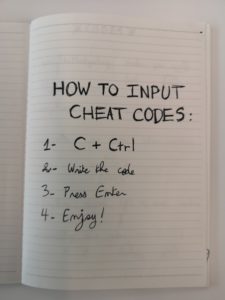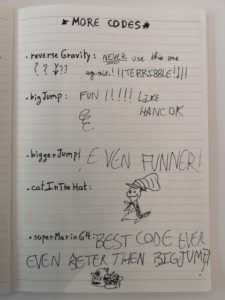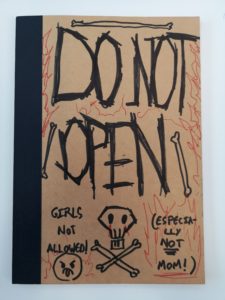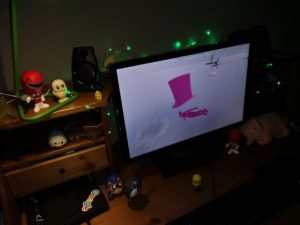Our interpretation of the theme was twofold. I had the idea for the project much before we came up with the theme and was resourceful enough to get the class to pick the theme I wanted because it fit so perfectly. The theme was “disruption”. Our first understanding of disruption was disrupting between the physical and digital world. This was done by creating the cheat codes, and hand-writing them on a book. The game experience was then designed around a child’s game room, which for us was very nostalgic as it took us back to our childhood’s where we’d maintain a book of our own games and cheat codes. The second part of disruption comes with the the powers that the cheat codes give you. Cheating here is the disruption. I understand it as disrupting from the norm, i.e, the norm that humans cannot fly, cannot jump higher than themselves, etc. We also wanted to use the cheat codes to create some interesting results. We decided to keep a “sin-counter”, which would be the threshold to decide whether you would be “worthy” of the treasure.

our welcome screen
The game came through the wonders of physics in Unity. The initial idea was to create a series of puzzle games in a dungeon, but we realised soon that it just wouldn’t be possible in the time that we had. After much discussion we finally decided to make different worlds, which eventually turned into “trials”. Hatim and I decided to work on different trials and linking them with some sort of portal later on. We used an Asset called Ultimate Fantasy Creator which had some beautiful prefabs of caves, rocks, and crystals. The environment was really shaped by the quality of our assets such as this one. The main character was taken from 3rd Person Controller + Fly mode. The character came with inbuilt scripts for movement, flight, running, etc. that provided really great game mechanics. Additionally, the character was unbiased in terms of gender, expression and color, which both of us appreciated. For the second level, Hatim sourced some cloud models from Super Mario Galaxy 2. The music was mostly from different versions of Zelda games, except for the cheat code music, which corresponded to the cheat itself (superMario64 = super mario 64 music, sonicTheHedgeHog = sonic music).

cheat code instructions

some of the cheats
An important element of the game itself was the experience that we attempted to create around it. Since most of the experience that we aimed to create was an extrapolation of our nostalgic experiences of childhood gaming, we decided to invent a kid, named “Dev” (he’s Indian, according to Hatim). Next, we had to create the kid’s notebook where he’d write down his cheat codes of the games he played. The user would be able to use this kid’s notebook to find out about the possible cheat codes to enter in the game. The next, and probably the most important aspect of the experience was actually being able to recreate a “game corner” – a kid’s desk with a computer, and some other “kid stuff”.

the cheat code notebook

room setup
The level designs took a while to create since it was a lot of work to put together so many assets to get exactly what we were going for, and the result, in my opinion was worth the effort we put in. Our playtesting sessions in the IM final showcase were great. Most people gave us great feedback. It was agonizing to watch some players struggle to jump around without even realizing that there are cheat codes right beside them, but most players eventually either found them, or gave up without being able to finish. No one was able to complete both trials without cheating at least once. Later in the night, my roommate tried (for quite a while) and failed to complete both trials without the cheat codes. A lot of player didn’t notice the book of cheat codes, even after looking around the desk and appreciating the ambience. It’s possible that we over-decorated and the book didn’t stand out as much.

someone playing our game
Overall, our game experience was really disruptive. We were lucky enough to get a corner in the IM showcase behind a curtain. A child’s game room in the middle of the show where players played a game with disruptive realities while being disrupted from the digital game to interact with the space was a pretty disruptive experience (I hope I didn’t disrupt the rules of english grammar with that long sentence). Each user had an option of various paths to take and cheats to try which created a unique experience for them. I was especially impressed by the creativity of some users in how they managed to finish some level with some combinations of cheats that I’d never considered while making these designs, and that for me was one of the biggest wins. Some users did get bummed out by how annoyingly hard it was, but everyone appreciated the graphics and the setup.
LINKS:
Download the game (unity files and executable)